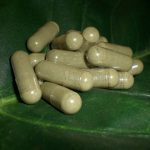
“I don’t see where that’s my problem.” Dr J David Haddox, Vice President of Health Policy at Purdue Pharma., told a reporter in 2001 after reviewing a patient’s statement regarding how they became addicted to the opiate, OxyContin. Dr. Haddox stated that they were given a prescribed dosage, but then chose to exceed that amount over and over again…
Less than six years later in 2007, Purdue Pharma was in the middle of a criminal investigation by the U.S Justice Department which lead to three top executives pleading guilty to fraud for downplaying the addiction risks of OxyContin. The company and executives had to pay over $630 million dollars in fines and damages. This came after a marketing campaign suggested OxyContin was less addictive than other opiate painkillers.
About the Drug:
Oxycontin was released in 1996 as a competitor to other opiates like Vicodin, and Percocet. Scientists at Purdue Pharma developed a technique to enable its drug, ‘MS Contin’, to release the opiates into the body over an extended period of time rather than having to take several single dosages. They developed this drug to provide pain relief for longer durations in comparison to the other brands.
Purdue Pharma. then branded the drug, ‘OxyContin’ while promoting longer lasting pain relief as their main differentiator. In 1994, the drug’s patent description claimed to “control pain in approximately 90% of patients…” In order to obtain the FDA’s approval, in 1995, Purdue Pharma. had to demonstrate that OxyContin was safe enough to be administered, and shortly thereafter, OxyContin was awarded FDA approval.
Dr. Curtis Wright, leader of the FDA’s medical review of OxyContin, left the FDA soon after OxyContin was approved; and according to his sworn testimony during a lawsuit in 2007 following the investigations by the US Justice Department, Dr. Wright was working in product development for Purdue within two years of his departure from the FDA.
Over the next decade Purdue Pharma. invested over $40 million into the development of this drug. They had sales reps promote to insurance companies, hospitals, and doctors to begin prescribing OxyContin as ‘a new pain-reliever that only needed to be taken twice daily’. Purdue told doctors in a 1996 news release, “With other drugs having a shorter duration of pain relief, this rids the “anxious clock-watching.”
By their third year, OxyContin sales doubled from ‘MS-contin’, it’s predecessor. Two years later Purdue was generating an annual revenue of $1 billion. Sales continued to climb until they leveled off at $3 billion, in 2010. In 2015, Forbes magazine estimated the Sacklers’ (the family that owns Purdue Pharma.) was worth $14 billion, which, the magazine noted, put the family ahead of American dynasties such as the Mellons and Rockefellers.
The Trouble Begins:
Shortly after its FDA approval and release in the marketplace, Dr. Lawrence Robbins of a Chicago based migraine clinic, began prescribing OxyContin to be taken every 12 hours as directed by the sales reps from Purdue Pharma, unfortunately however; most of his patients reported that the drug only lasted between four to seven hours. In response to this, Dr. Robbins began directing his patients to start taking the medicine once every 8 hours instead of 12.
Overdosing became a common practice with many doctors, as their patients were experiencing the same lack in effectiveness as Dr. Robbins’ patients were. Many physicians began applying for larger prescriptions for their patients. As Purdue sales reps began reporting this feedback back to headquarters, Purdue Pharma began producing higher amounts of opiate per pill, and directed that everyone remain on a twice a day prescription regiment.
Reports show that over 27.8% of the Oxycontin prescriptions in 2001 were dosed every 8 hours or more. (FDA Filing; http://documents.latimes.com/fda-filing-2004/) In response to this data, Purdue Pharma. sales reps were sent back to re-educate doctors and hospitals to only prescribe 12-hour dosages. According to an FDA filing, one memo stated “There is no Q8 dosing with OxyContin”, and added, “it needs to be nipped in the bud NOW!!” (FDA Filing;http://documents.latimes.com/fda-filing-2004/)
Taking higher per pill dosage amounts significantly increases the likeliness for addiction to occur, as the drug would cause a patient to feel the euphoria of a higher dose, but then not last as long as they would like. The unfortunate effect as that happens as the drug began to wear off, is that patients would begin suffering from their underlying pain, and stages of withdrawal would also start to cause discomfort. This causes the craving for more of the drug, (aka. addiction).
In addition to the over dosing of the drug, patients were beginning to crush and snort the pills in order to provide them with a much faster drug effect. Following the 2007 lawsuit of over $360 million, Purdue funded a program to create a tamper-free version of OxyContin which made it harder to crush and snort. This helped their overall PR because it promoted that they were actively combating addiction.
The Problem Lives On:
After the lawsuit, OxyContin sales began soaring higher than years previous. More and more of the prescriptions at higher doses were sent out. This started the Opioid Addiction Epidemic, and has claimed more than 190,000 lives from overdoses involving OxyContin and other painkillers since 1999. It was reported that over 75% of heroin addiction begins with opiate use. According to an analysis of nationwide prescription data conducted for The LA Times, more than half of long-term OxyContin users are on doses that public health officials consider dangerously high, (http://www.latimes.com/projects/oxycontin-part1/).
In over 47,000 drug overdoses in 2014, nearly 19,000 were from opioid prescriptions. Another 10,500 overdoses were from heroin. The overdose rate in 2008 was four times the rate in 1999. Substance use treatment was six times higher in 2009 compared to 1999. In 2012 over 259 million opioid prescriptions were written, which is more than enough to give every American adult their own bottle (http://www.asam.org/docs/default-source/advocacy/opioid-addiction-disease-facts-figures.pdf).
To make matters worse, in August 2015, the FDA approved OxyContin for children as young as eleven. The FDA approved the drug for children who need “daily, round-the-clock, long term” pain relief (http://www.fda.gov/Drugs/NewsEvents/ucm456973.htm). This caused an outrage between many parents and physicians alike. They fear this will lead to addiction at a young age, and that this is far too young to begin using OxyContin.
These numbers are astonishing. Our system is flawed. Drug abuse is on the rise, and the pharmas are becoming wealthier every day. The question becomes, when do we as individuals start to recognize that we are all victims of a much bigger system. When do WE start to realize that we need to take better care of ourselves by making a conscious effort to learn more about what we’re putting into our bodies and the harmful things that can happen to us as a result? Addiction is a serious problem. If we can start connecting with the causes of this disease, we can begin making a positive impact on the numbers we outlined earlier.
Contact Clearbrook
Are you or someone you love suffering from an OxyContin addiction? For more than 40 years, Clearbrook Treatment Centers has been providing effective drug treatment to those afflicted with the disease of addiction and alcoholism. Unfortunately, opiate and heroin abuse is getting worse, but we have found a solution. Our Admissions Specialists are available 24 hours a day to assist you. Give Clearbrook a call today and begin the healing process. We have found hope through sobriety!







